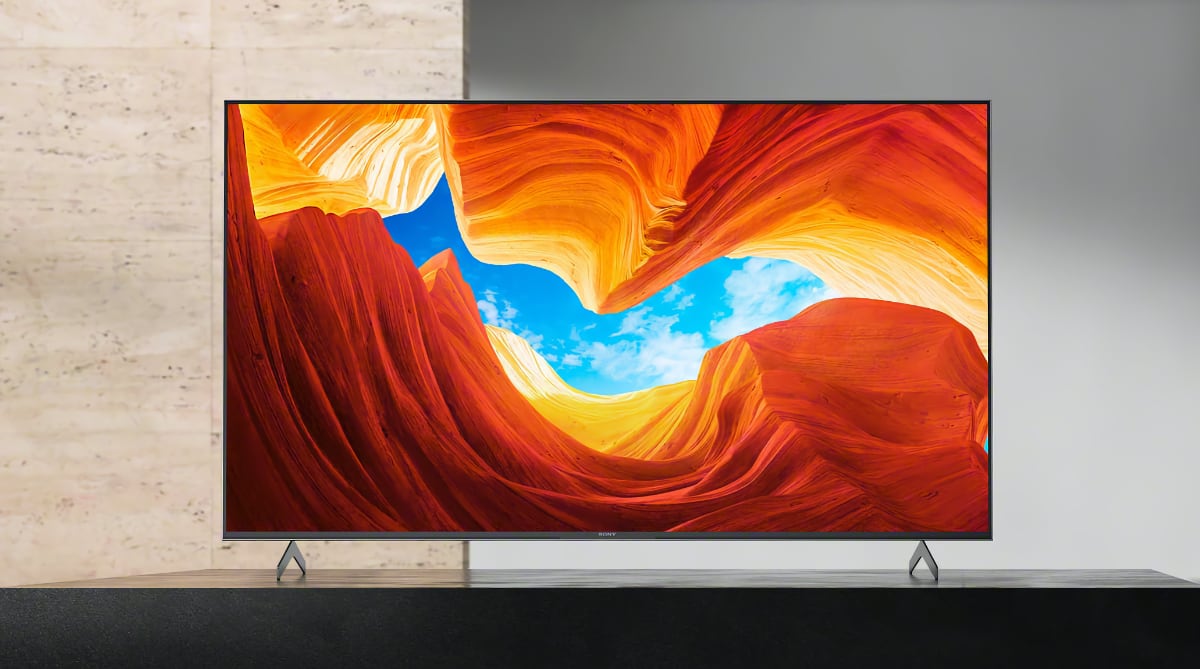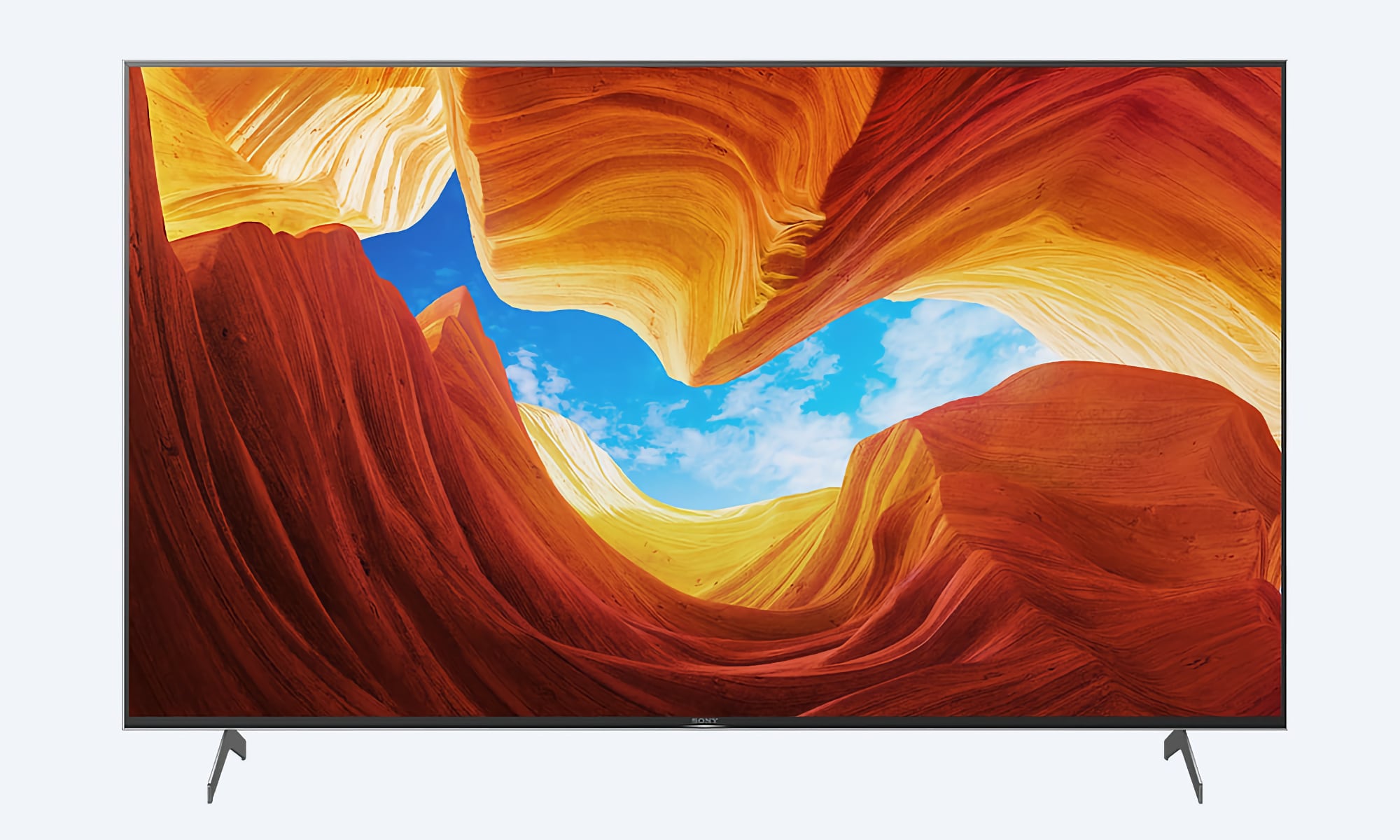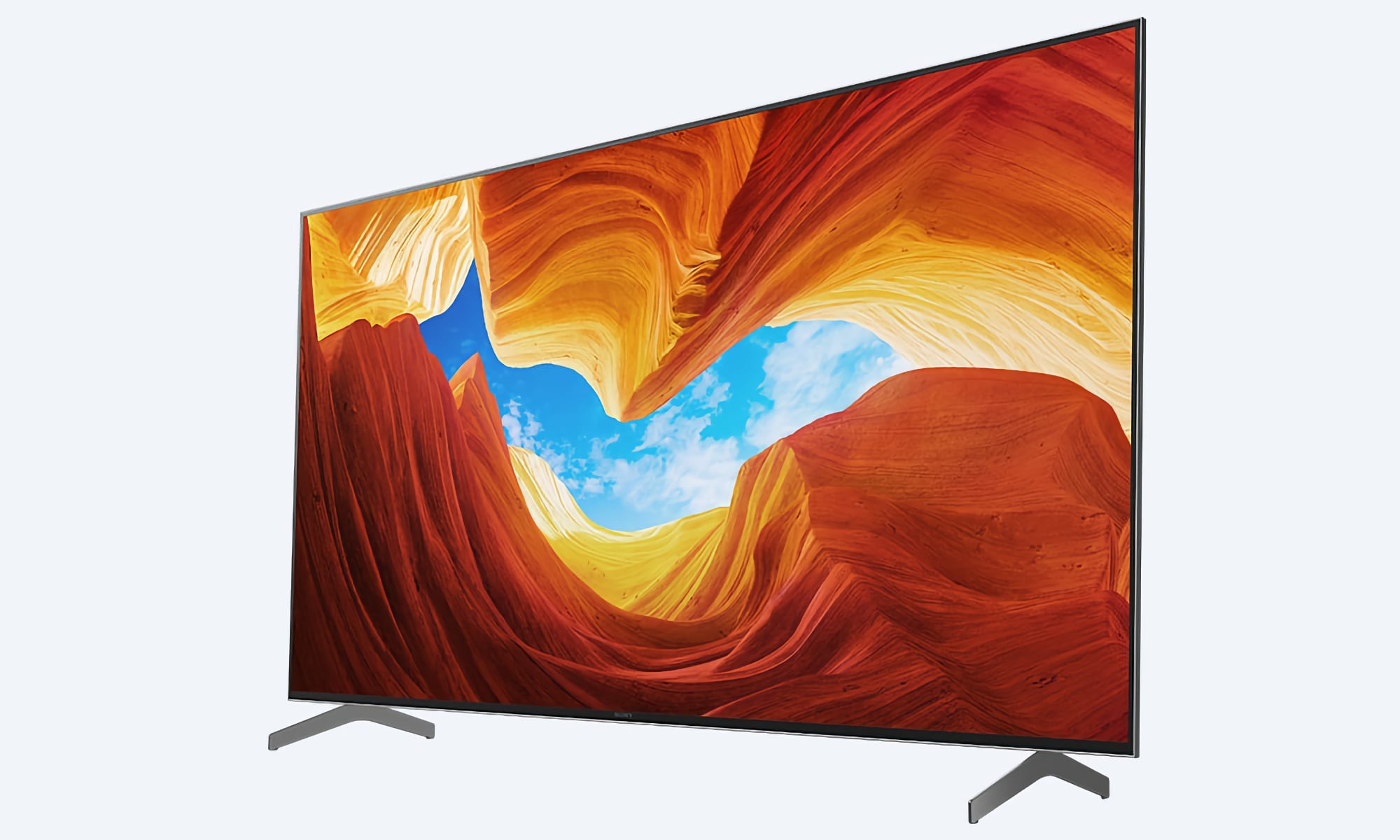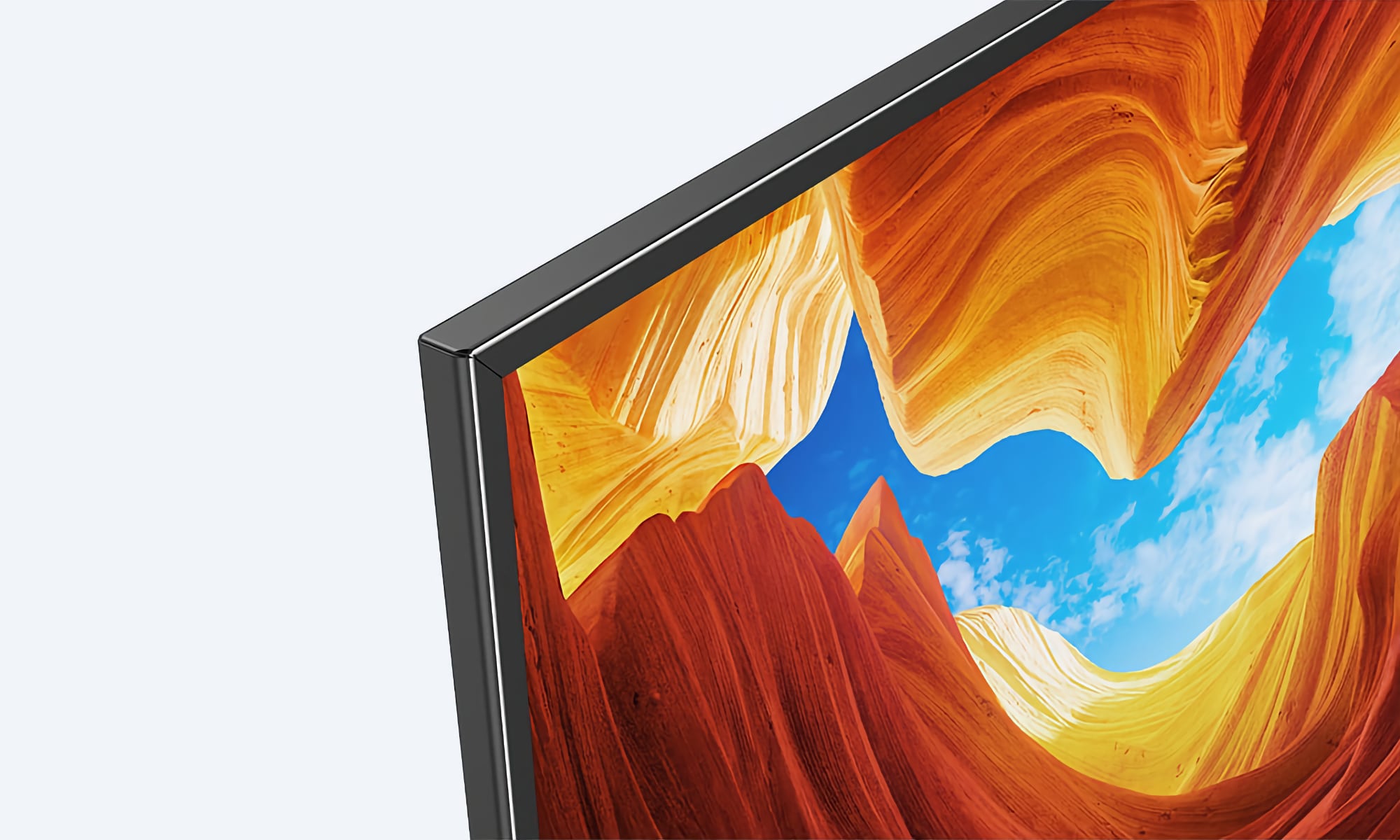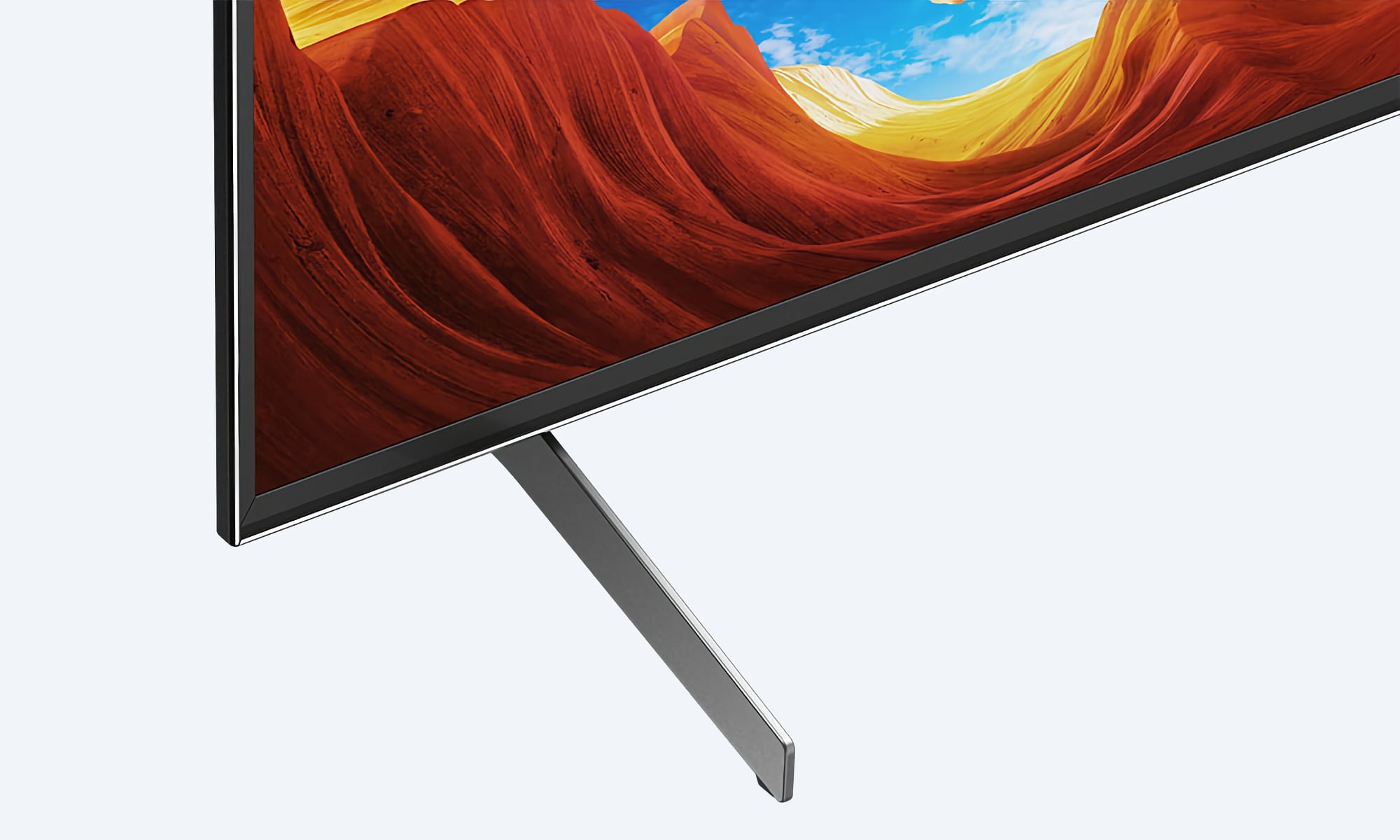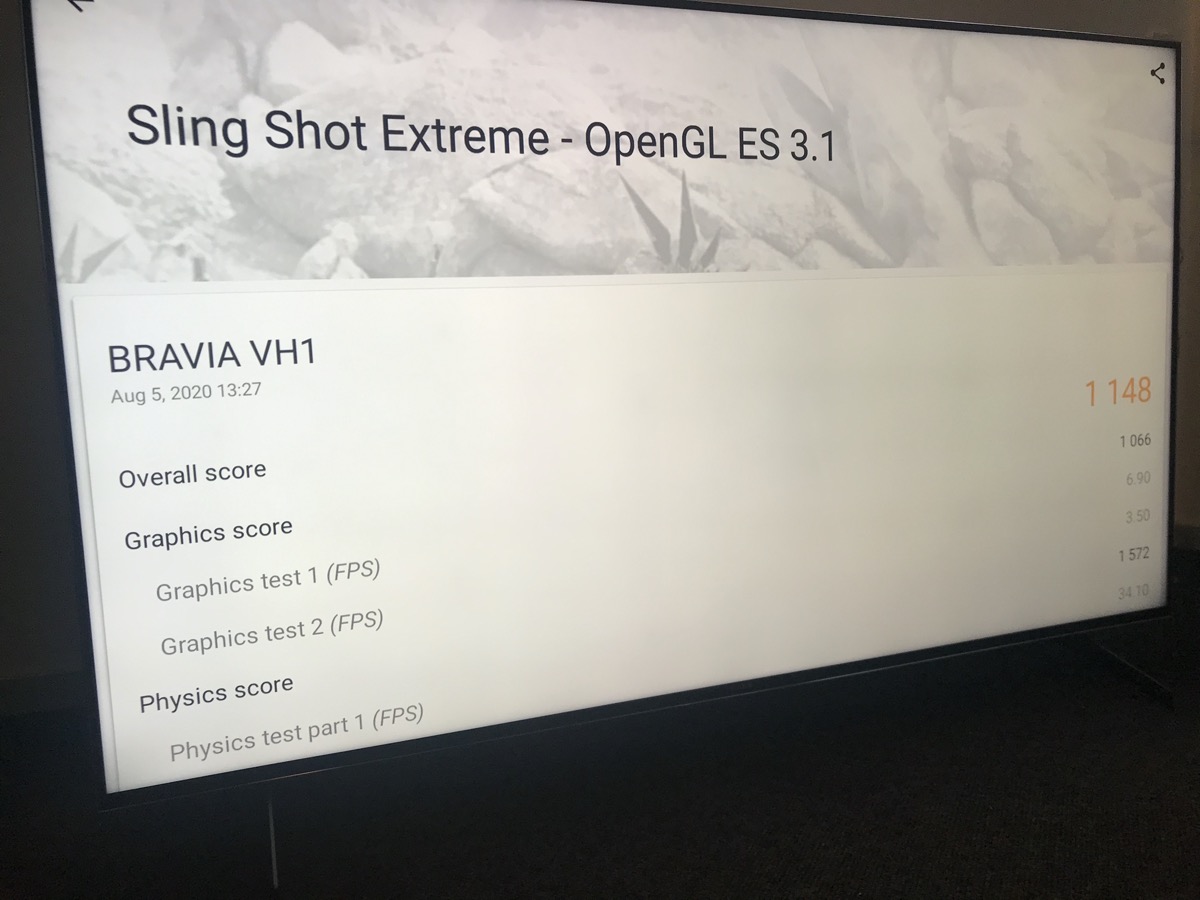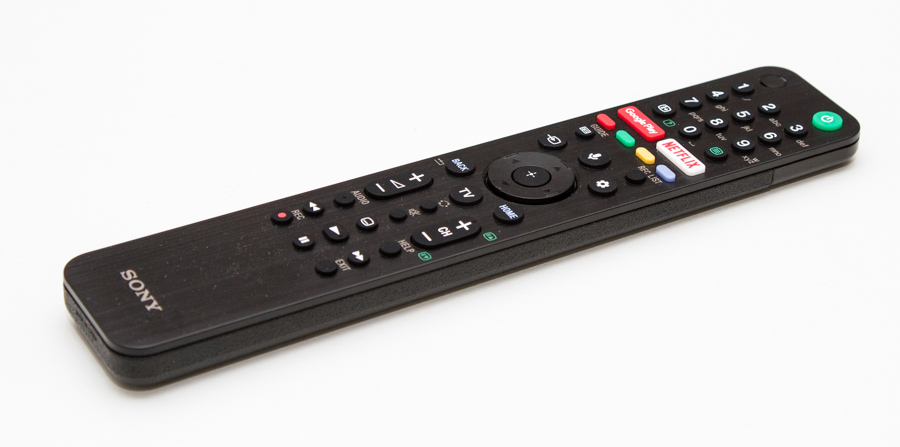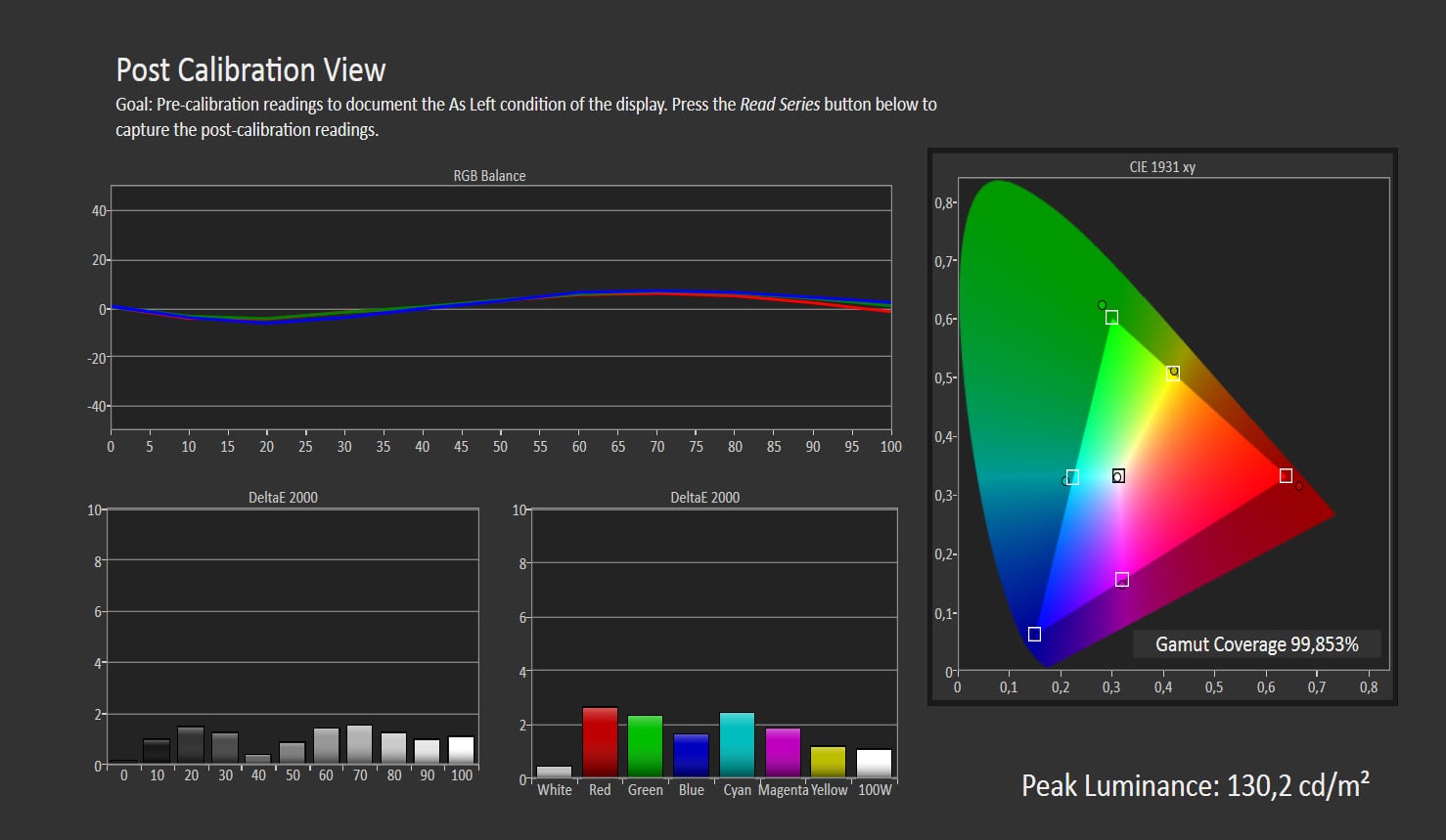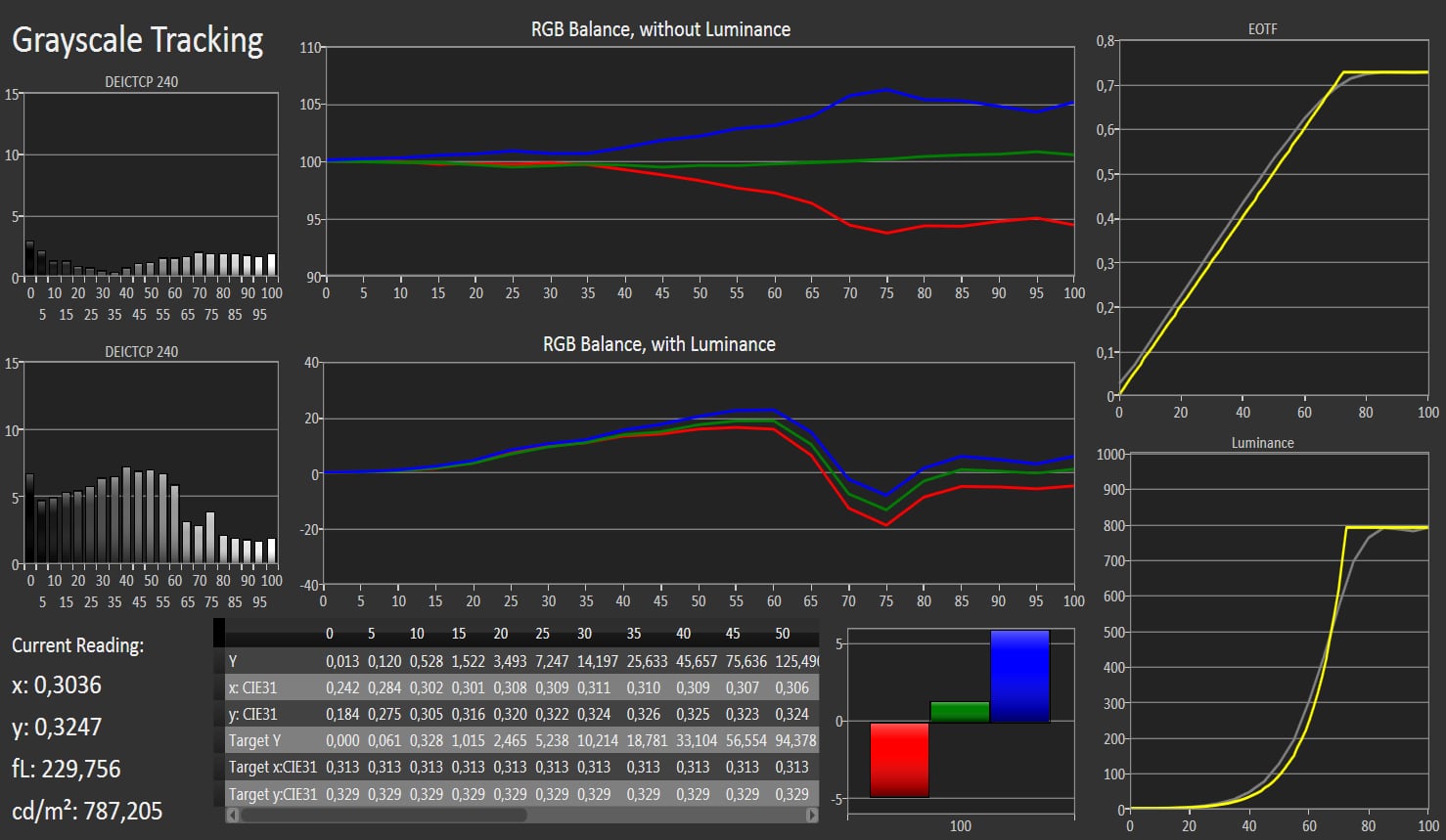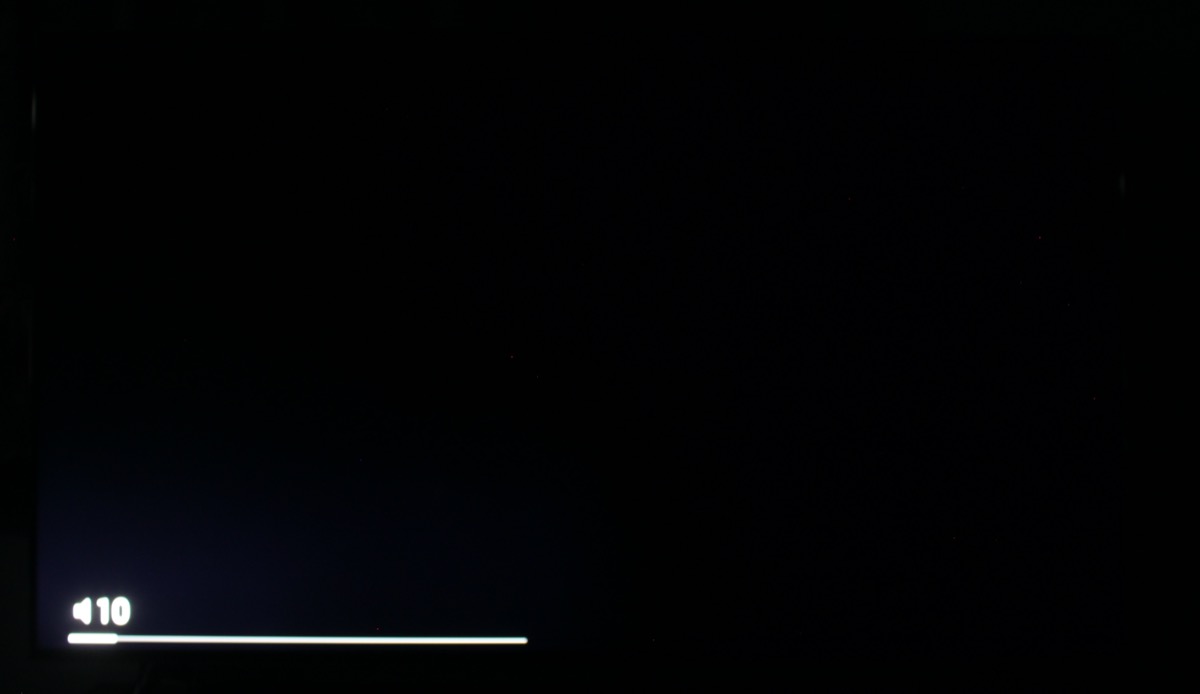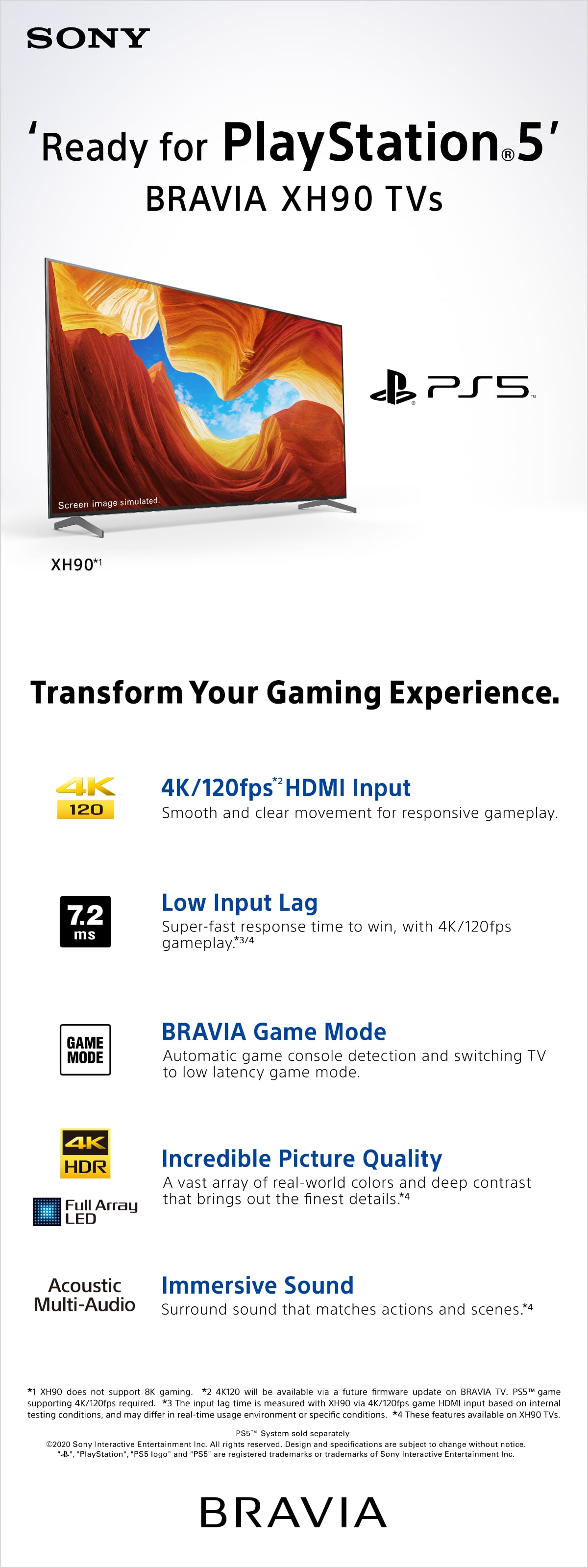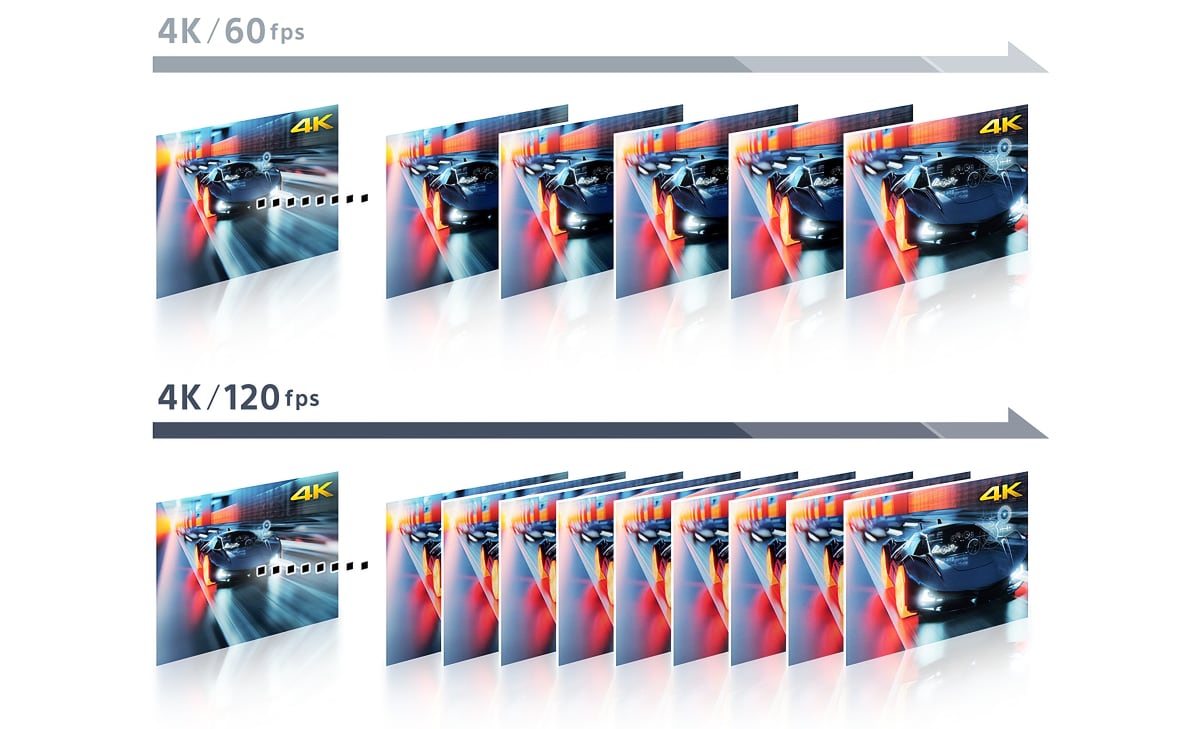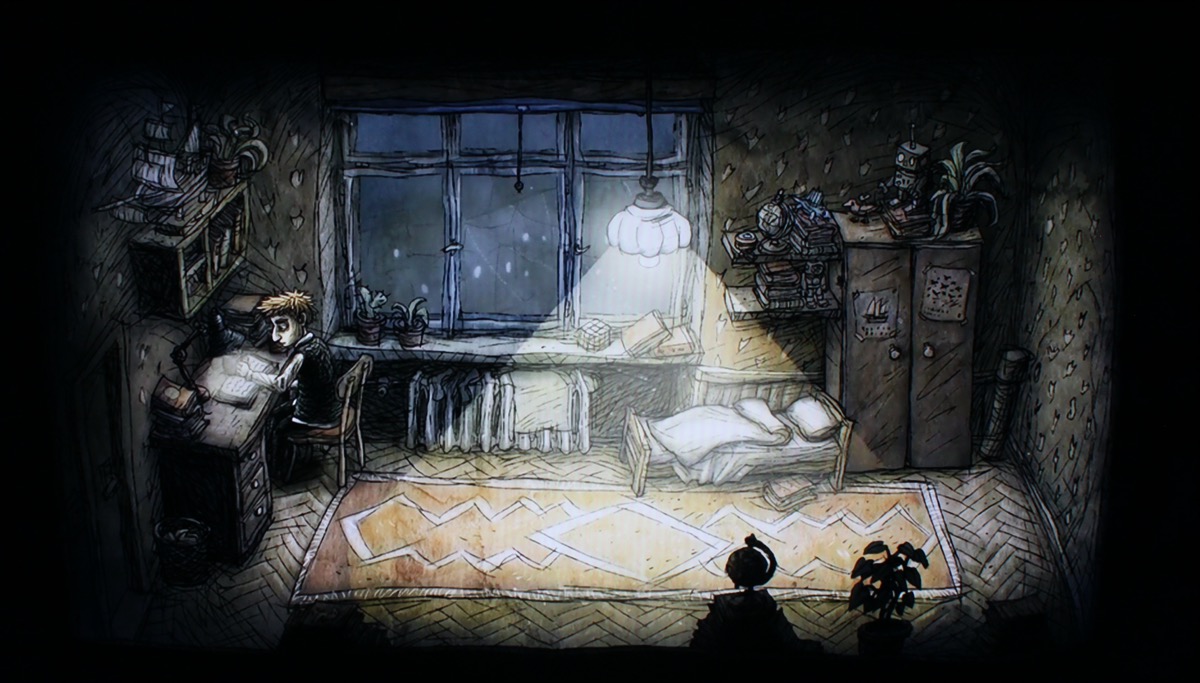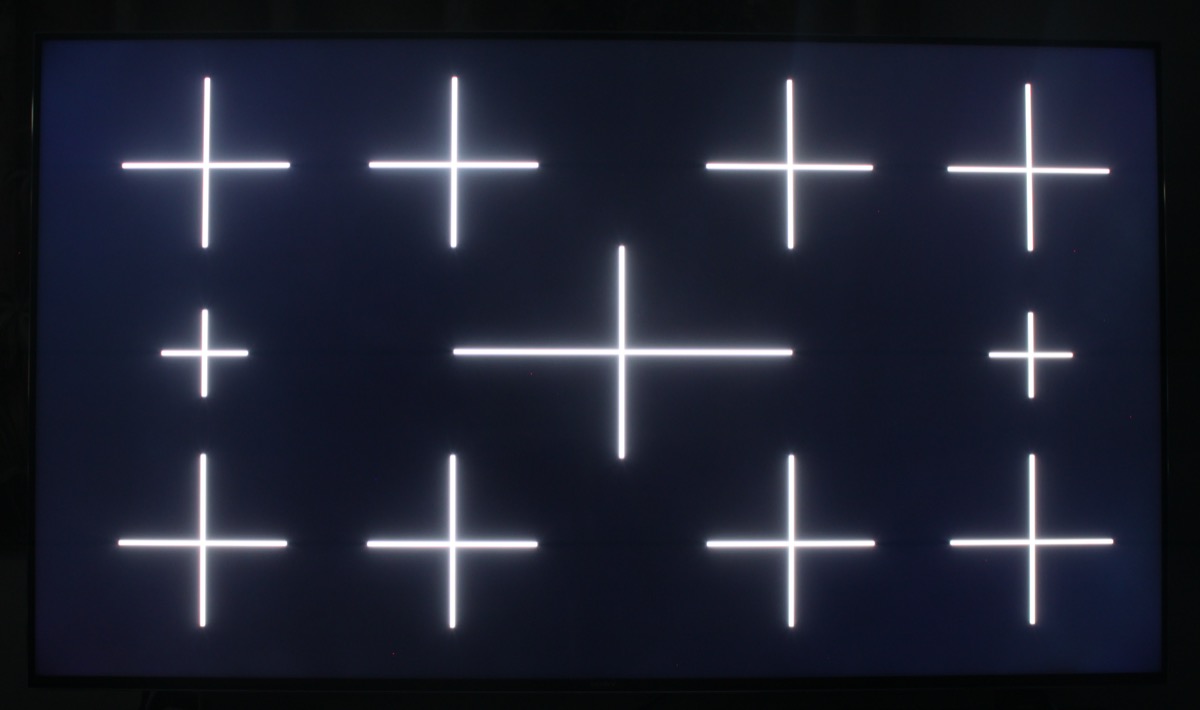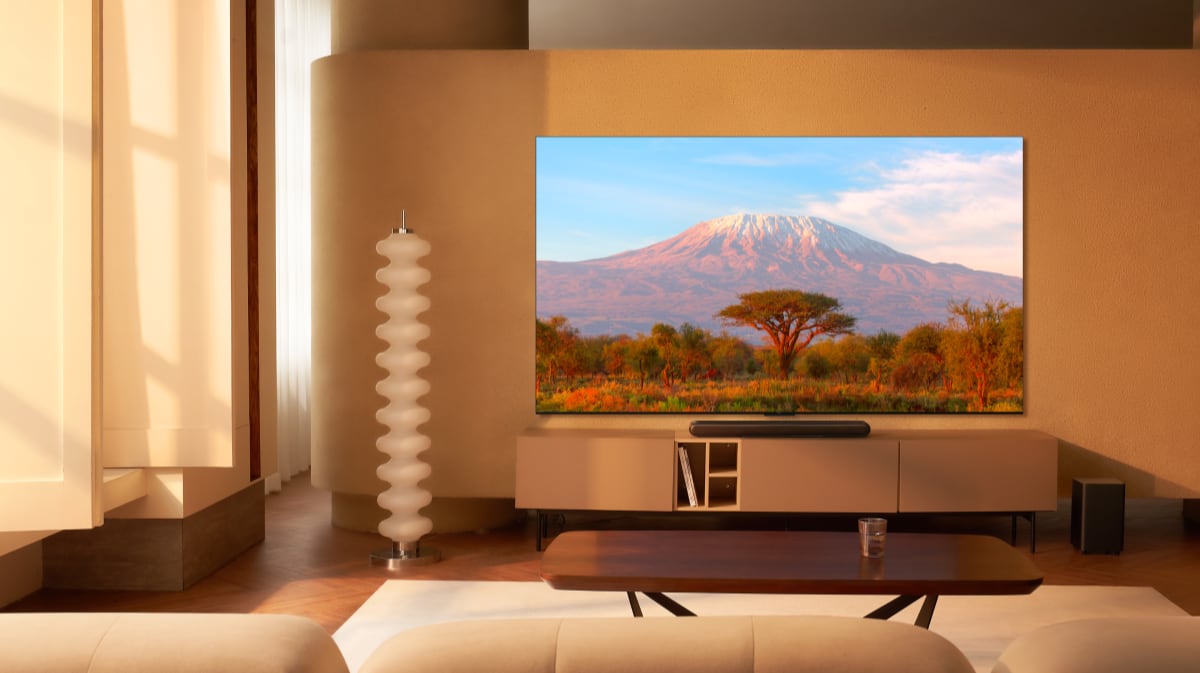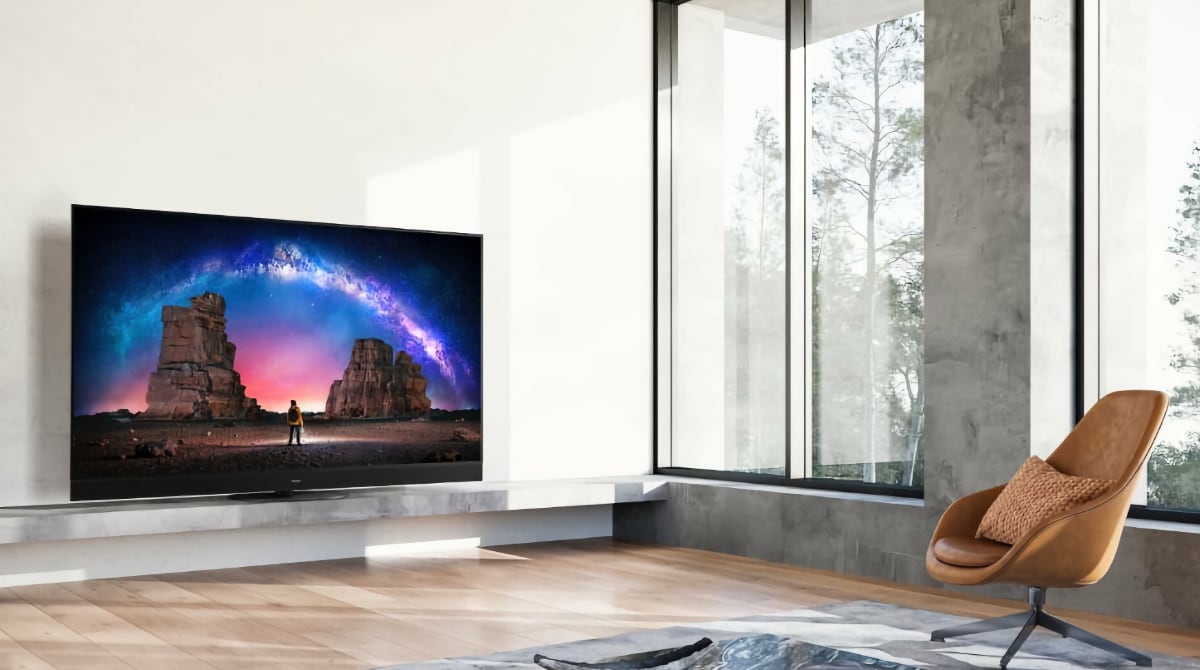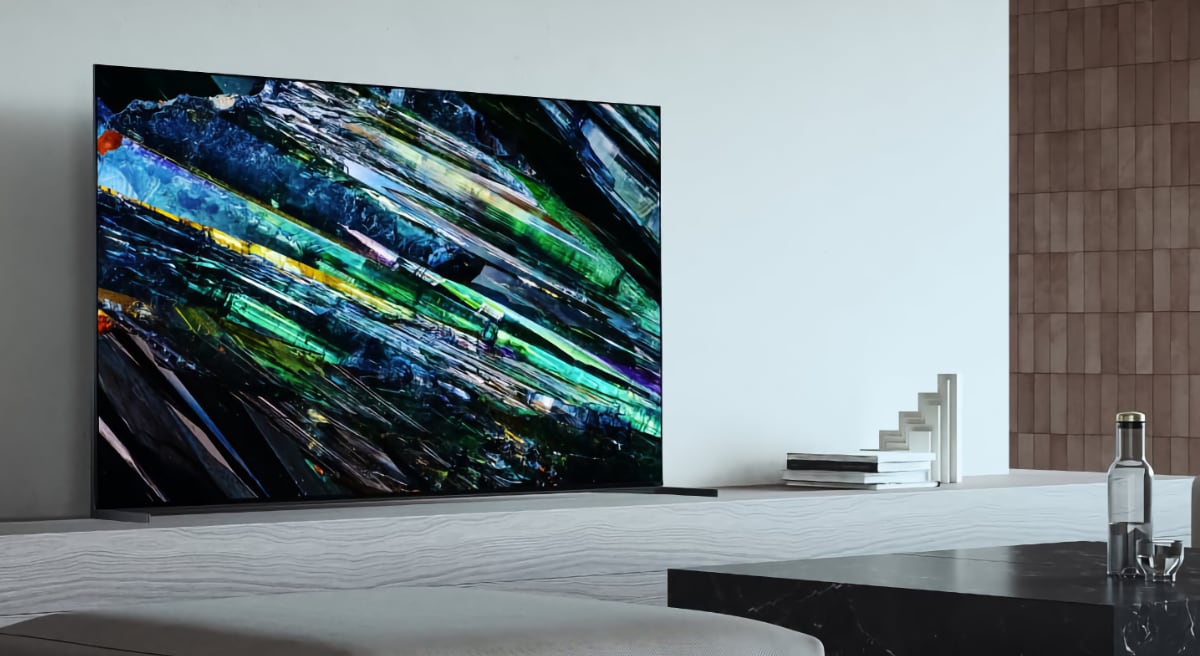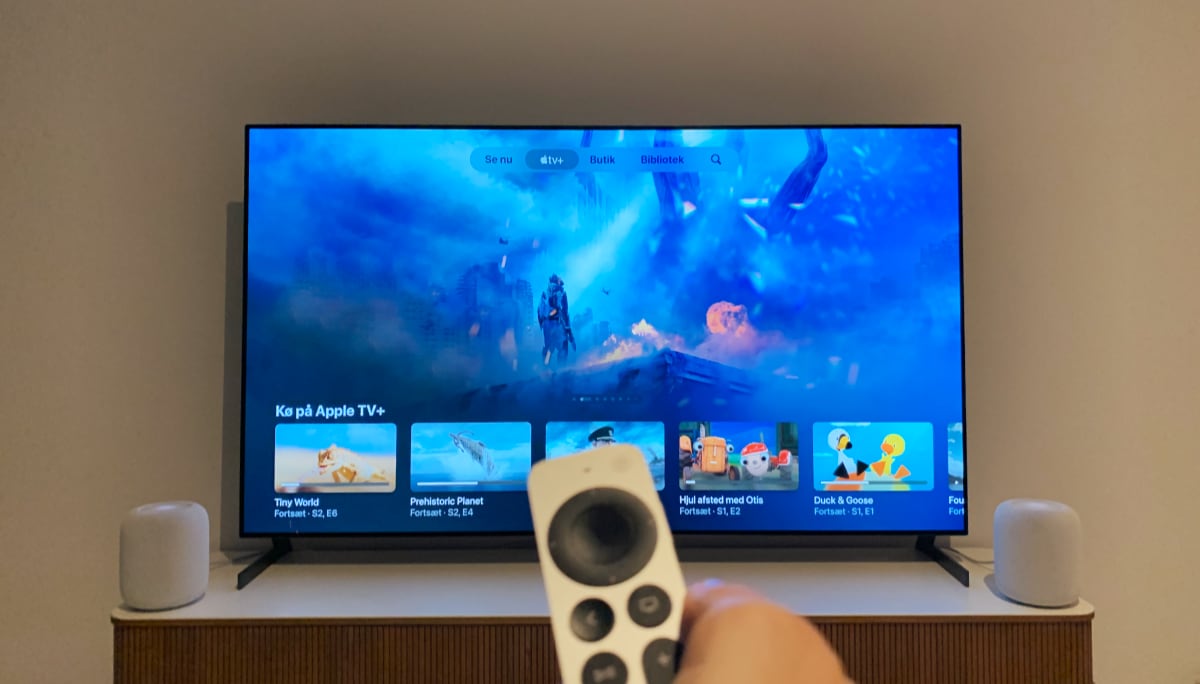Review: Sony X900H (XH90)
Sony X900H in the US and XH90 in Europe has been referred to as the 'PlayStation 5 TV' and is it also one of Sony's 'Ready for PS5' TVs based primarily on its HDMI 2.1 capabilities including support for gaming in 4K120 (4K at 120 pictures per second). It is also an Android TV with a new, more powerful SoC that has not been used in any previous Sony TV. What else? Here is our full review. The TV is available in 55, 65, 75, and 85-inch sizes. We have the 65-inch model. Also read: Sony 2020 TV line-upPrice and retailers:
First impressions
Sony X900H (XH90) looks like most modern Sony TVs or many other LED LCD TVs, although is has a thicker cabinet than some of its peers due to the LED system, which is a backlit LED module with zone dimming capabilities. The system takes up more space behind the LCD panel but also has the potential to improve picture quality. It is not the prettiest of TVs but it should still look decent in most living room settings. It rests on two metal feet that provide a solid foundation for the TV but it is very wide and takes up a little extra space in depth too. The TV will not fit on all furniture so check before you buy. There is a slim silver frame (made from plastic) around the LCD panel. All input and output ports face to the side to make sure that you can wall mount the TV as close a possible to the wall. However, given the relative thickness of the TV it will still take up some space. The CI (Common Interface) slot for the European market is hidden and can be accessed after removing a small panel. The LCD panel has a semi-glossy coating that will produce some reflections during daylight hours. It is neither significantly more or less reflective than other LCD TVs in its price segment.User experience & features
Sony X900H (XH90) comes pre-installed with Android 9.0 that, compared to Android 8.0 in previous Sony TVs, includes mostly bug and performance fixes. There are no new, major consumer-facing TV features to detail and we are still waiting for Google Stadia to arrive officially on Android TV. Sony will update to later versions of the Android TV operating system but it has not specified a timeline. From the remote control to the Android features (Google Play apps/games, built-in Chromecast, Google Assistant etc.) to user interface and experience, X900H (XH90) largely resembles other recent Sony TVs so we refer to our review of Sony A8G (A8) for more details on the user experience and features. There is one important difference, though, which is that X900H (XH90) is the first Sony TV to employ the MediaTek MT5895 SoC (with 3GB RAM and Mali-G52 GPU), the next step for Sony. It delivers improved performance and enables the company to move to HDMI 2.1. We expect that the same SoC - or a similar one - will represent the foundation under other Sony TVs soon to come so we decided to do further testing, specifically benchmark testing. We do not usually do that so why start now? Well, Google's Android TV platform along with other modern TV platforms such as Apple tvOS (in Apple TV) and Amazon FireTV represent a new paradigm for TV, and all promise to bring a world of content to TVs via the internet. Not just streaming video, but also downloadable games, home connectivity, virtual fitness, voice assistants, and much more. For especially downloadable games you need raw graphics power (unless you believe that services like Google Stadia will leapfrog everything else related to gaming in the near term). Can Android TVs like the Sony X900H finally match boxes like Nvidia Shield or Apple TV 4K?As you can see in the table, Sony's latest Android TV still trails the Nvidia Shield TV by a significant margin, and even Nvidia Shield has not managed to create a vibrant platform for gaming on Android TV. In the table, we have also included results for Apple's A10X and A12X SoC because A10X is found in Apple TV 4K, and A12X (or A14) is rumored to for the next-generation Apple TV box. However, be aware that these benchmarks are from A10X and A12X in iPad Pro, so performance is constrained by the battery and form factor - performance is better in Apple TV as it is always connected to a power outlet. So, where does this leave us? TVs powered by Android, regardless of manufacturer, have never really been optimized for gaming. An ecosystem is not stronger than the weakest link so as a result Android TV gaming has not really taken off. This same was true for Apple TV gaming that lingered for years until Arcade (and other improvements) arrived to breathe new life into the project. Also read: Apple TV's path to becoming a real game console There is a selection of casual games available on Google Play, and Sony X900 (XH90) is powerful enough to run them, but even with improved CPU and GPU performance it is not a turning point that will transform Sony Android TVs into gaming platforms. Other limiting factors include just 3GB of RAM, the fact that the TV is a 32-bit system (also discussed in our Nvidia Shield 2019 review) and just 4GB of storage, of which only 3GB is available. You can get additional storage capacity by connecting an external storage device. In a more traditional TV context, the current hardware should be sufficient to deliver a satisfactory experience when browsing streaming apps and TV features. The sporadic sluggishness that continues to plague Android TVs is related more to software/drivers, and although Google has promised to bring performance fixes to its TV platform there is still work to be done. One contributing factor of course is that Android TVs generally ship with "old" software. Google has released Android 11 for TVs but the latest 2020 Android TVs still ship with Android 9. A quick note about Apple AirPlay 2 and HomeKit support in Sony's TV. With HomeKit, you can controls basic features of the TV via the remote icon in the control center on iPhone/iPad. This includes turning on/off the TV, play/pause, and adjusting audio volume. Briefly after putting the TV into stand-by, you will still be able to 'AirPlay' content to the screen (and wake up the TV) but after a night's stand-by, the TV no longer announced itself as an AirPlay receiver on our network. It would start again only after being turned on. Speaking of standby, the Sony TV still has very high stand-by consumption for a long period after turning it off, and it also wakes up (without turning on the screen) occasionally to check something, which increases standby consumption, as noted in the measurement section. Lastly, we examined support for the new AV1 video codec. Despite having a new MediaTek SoC, the TV does not support AV1 decoding at this time. Our AV1 test files would not play and YouTube's AV1 streams were not compatible. The TV comes bundled with the same remote control as many other Sony TVs.Sony X900H (XH90) - CPU/GPU benchmarking
FlatpanelsHD
GeekBench 4 3D Mark - Slingshot Extreme GFXBench - Manhattan 3.1 (offscreen) GFXBench - Aztec Ruins (offscreen) Other Android TV Single: 612
Multi: 1716450 failed 142 frames Sony X900H (XH90) Single: 1195
Multi: 28821148 958 frames 605 frames Nvidia Shield TV Single: 1400
Multi: 41004250 2765 frames 2250 frames Apple A10X Single: 4000
Multi: 9500- 4500 frames 3300 frames Apple A12X Single: 5000
Multi: 18000- 9570 frames 6850 frames TV audio
The built-in speakers are decent but certainly not powerful or versatile. Sony has been promoting its 'acoustic multi-audio' system, which is available in the 65-inch and larger models. It is supposed to deliver more direct sound with voices sounding as if they are coming directly from the people in the picture. The effect is there but it is not a striking difference and not comparable to the, in our opinion, better speakers in Sony's OLED TVs where voices actually sound as if they were coming from the people on-screen. Compared to the other TVs we had in for testing at the time (Philips OLED805 and Panasonic HZ2000), Sony X900H had the weakest bass and speakers in general but the other TVs are also more expensive. If you want a great sound experience you should connect an external speaker solution. Sony TVs also support Dolby Atmos but you will not hear any noteworthy effect with the built-in speakers. Dolby Atmos can also be outputted via the HDMI ARC/eARC connection in the TV. We were able to successfully pass Atmos from the TV's ARC to the Sonos Arc soundbar. However, be aware that the firmware required to unlock higher quality audio via eARC will not be available until later.Calibration
Normal consumers should not be bothered with calibration; buying a TV with accurate colors is a perfectly fair expectation to have. More recently, we have started measuring all of the relevant picture modes found in TVs, and included the results in our reviews. See the table to the right plus the highlighted results in the big table below. It is a simplification but you will want the vertical bars to be as low as possible (preferably lower than 3 for DeltaE) and the RGB line graph to track as closely to 0 as possible. The color dots should fall within the white squares in the color gamut graph to the right.Usually the recommendation is to pick 'Movie' mode for the most accurate picture but we also include our recommendation for calibrated picture settings. These settings will not be as accurate as a full calibration on your specific TV sample but they will get you far. However, in recent years Sony made a change, which means that for newer Sony TVs you should pick 'Custom' mode for the most accurate picture quality. 'Game' mode is also surprisingly accurate for a game mode, which is perhaps related to Sony's sense of professional pride – Sony is the PlayStation company after all. As for HDR, you should again pick 'Custom' mode and in fact any changes to picture settings in 'Custom' mode will propagate to both SDR and HDR modes. Sony is unique in this approach as TVs from other brands have different setting profiles for SDR and HDR, even if you select the same picture mode - besides individual settings for each HDMI port and source, of course. Sony has so far chosen to ignore Hollywood's Filmmaker Mode. HDR peak brightness comes in at maximum 700-800 nits, and the TV does not adhere fully to the brightness curve (PQ), so you will see slightly overbright HDR pictures compared to what was intended. However, reading too much into a graph's peak brightness or color/luminance accuracy when dealing with a zone-dimming LCD TVs is not recommended because measuring and calibrating a TV involves having more or less static patterns on the TV, usually a small box in the center of the screen on a even-colored background. As soon as the TV starts to flex its dimming zones in real use, color/luminance accuracy will shift depending on the picture content, and peak brightness will depend heavily on the size of the object that must be illuminated. As for color gamut coverage for HDR content we measured just 87% for the DCI-P3 color gamut, or 63% for the Rec.2020 gamut. It is on par with Samsung's 2020 "QLED" 4K LCD TVs but visibly lower than the best HDR TVs out there, meaning OLED TVs.Other picture modes
Click the title to expand the view
SDR Standard SDR Vivid SDR Game SDR Cinema HDR Standard HDR Vivid HDR Game HDR Cinema Measurements
In our "measurements" section we include all measurements and our suggested calibration settings. If you want to learn more about our test methodology click hereNote: We include calibration settings only for SDR, not HDR. For our calibration we have deactivated the ambient light sensor that automatically adjusts the backlight setting according to your environment. You may prefer to have it enabled.Picture quality
Sony X900F (XF90) replaces X900F (XF90) from 2018 (review here). The latter carried over into 2019 and 2020 and has been one of Sony's most popular LCD TVs in recent years, mainly due to its zone dimming capabilities in an affordable package. In 2019, Sony also introduced the X950G (XG95) as part of its 9 series (review here), and it was one of the first models to take advantage of Sony's 'X-Wide Angle' system to improve viewing angles. Unfortunately, wider viewing angles came at the expense of black levels and contrast, and we found the trade-off disappointing. X900H (XH90) does not feature the 'X-Wide Angle' system and as you would expect it delivers visibly better black levels and contrast performance. As much was clear immediately, and we measured the contrast ratio to a little over 5000:1, which is a big improvement over TVs with the 'X-Wide Angle' system, but obviously still low compared to for example Sony's own OLED TVs. We are jumping straight into HDR performance here. As mentioned in the calibration section, DCI-P3 color coverage is 87% and peak brightness is maximum 700-800 nits but that it not the full story. As you can see in the measurement section, the TV is closer to 600 nits for small bright segments, which is where film and game creators will most often use the higher brightness levels possible with the HDR standard – stars, lamps, small glowing objects, reflections etc. In reality, X900H (XH90) will typically deliver lower or comparable peak brightness to OLED TVs but not with nearly the same might and finesse. Our tests revealed that the 65-inch Sony X900H (XH90) has 8x4 dimming zones, or 32 in total, which means that each LED dimming zone covers 260.00 pixels on the LCD panel, or more than 3% of the picture area. Our testing also revealed that, compared to Samsung's LCD TVs including the 2020 Q95T or 2019 Q90R, Sony's dimming system has faster rise and fall times, meaning that zones engage and disengage at a faster rate and closely follow the action on-screen without delay. This is important if you want to get those impressive brightness pops from explosions or sudden elements in the HDR scene. But Sony's system is also more conservative, meaning that it does not engage its zones as aggressively as Samsung's. Often, peak brightness will look a little less dramatic. A positive consequence of that approach is that you see less blooming/halos around bright objects, although there are still plenty blooming to see on Sony X900H (XH90) when watching HDR content, especially noticeable around subtitles or menu elements such as the volume indicator (see below). It is significantly less noticeable with SDR content. We like Sony's zone dimming system better than Samsung's as it delivers more balanced HDR picture quality but 32 zones are clearly too few. There is no magic bullet and the seemingly constant hope that "next year it will work" is naive. To get proper HDR picture quality without blooming from an LCD TV you need far more zones, tens of thousand if not hundreds of thousands depending on how the high peak brightness reaches. Ideally you would want one zone for each pixel, which is how self-emitting displays like OLED or microLED work. You get significantly better HDR picture quality with OLED TVs, and compared to Sony X900H (XH90) the divide was strikingly clear - and articulated in many interesting terms - to anyone who saw the TV during our testing, as it was placed next to Philips OLED805 and Panasonic HZ2000. It is not close but Sony's TV has one advantage, which is its higher full-screen brightness that contributes somewhat to the HDR presentation in bright daylight, although the OLED TVs still deliver a higher-contrast HDR picture with truer colors and "depth". We also noticed quite heavy banding at times in dark scenes on Sony X900H (XH90), which is a shame. Overall, we are a little disappointed with the TV's HDR picture quality, especially compared to the 2-year old X900F that benefitted from having more dimming zones. Switching our attention to SDR and picture quality in general, X900H (XH90) is a classic Sony TV in the sense that it has overall good picture processing. The pre-calibrated picture modes are not spot-on but good enough for the majority of viewers. Its limited zone dimming system matters less for SDR content as the LCD panel's native contrast ensures that you can get relatively bright images (for example in a bright living room) without affecting black levels too heavily. For SDR content, which still represents the majority of viewing time for most viewers, including TV programs, sports, and gaming, X900H (XH90) is a very good allround TV. Other than the above, there is not much else to add in terms of Sony's video processor and SDR picture quality that has not already been examined in previous reviews. X900H is equipped with Sony's X1 video processor that lacks some of the most recent additions including the latest gradient noise reduction algorithms in the 'X1 Ultimate', but for the most part performs well. Switching our attention to gaming, and especially console gaming, this is where it gets interesting but also a little cloudy, both literally and figuratively. Sony X900H (XH90) has been referred to as the 'PlayStation 5 TV' and is it also one of Sony's 'Ready for PS5' TVs. The marketing program covers a bundle of features;Sony's words, not ours. Let us try to decode it:
- 4K/120fps HDMI input
- Low input lag
- Bravia Game Mode
- Incredible Picture Quality
- Immersive Sound
Now, we would love to continue down this 'PlayStation 5 TV' path but reality is just that we cannot at this time. We will have to wait for the firmware to arrive (no date has been set) as well as the new consoles. We know from experience how big an improvement true 120fps gaming can be compared to 60fps – how much smoother and more detailed motion is together with 4K resolution – but we cannot say anything definitive about performance in a particular TV until we have a chance to check (and play console games for hours and hours as "work"). Sony has said that X900H (XH90) will also be its first 4K TV with support for HDMI VRR (Variable Refresh Rate) with a 48-120Hz frequency range. Besides an overall smoother gaming experience, VRR will be extra beneficial in combination with frame rates beyond 60fps as game developers can use the full range from 60 to 120fps (and not lock to either 60 or 120fps). But again, VRR support is not enabled yet. We have to wait for Sony's firmware update to be released. Both PlayStation 5 and Xbox Series X will support HDMI VRR. However, our biggest concern is Sony X900H's HDR picture quality. For AAA games, HDR support is becoming much more common, even if implementations are not always great. In our view, good HDR is now one of the most important factors when it comes to the visual side of console gaming. HDR on Sony XH900 (XH90) is not great and in Game mode the zone dimming system is even less capable as it gets scaled down to its most raw form to ensure as little input lag as possible. Another open question is if LCD TV panels are fast enough for optimal 4K120 presentation, specifically if response times are too slow. Already with +120Hz LCD monitors, manufacturers employ aggressive overdrive (under/overshooting of colors), strobe lighting and other means to improve responsiveness. LCD panels are inherently slow so for 120Hz refresh (120 updates per second) response time (the time it takes for a pixel to shift to a new color) must be very low. Systems like overdrive can help but the downside is that you sometimes see tiny bright halos around moving objects, black smearing around dark objects, and similar side effects. And even if the overdrive effect is too little to notice consciously, it will reduce motion detail. Sony has employed a scanning backlight system that can improve motion resolution but it comes at the expense of brightness, especially for HDR. Self-emitting and super fast display technologies like OLED and microLED are far more technically capable of delivering on the 4K120 promise, which is why we are a little disappointed to conclude that even after IFA 2020 Sony has not unveiled an OLED TV with HDMI 2.1 ports. Of course, there are also TVs from competing brands with HDMI 2.1 ports that will never be labeled 'Ready for PS5'. For example, barring any errors in its HDMI 2.1 implementation, we consider LG CX as a significantly better 'Ready for PS5' choice. However, burn-in may be a concern if that is all you are planning to use it for. To sum up, Sony X900H (XH90) is a decent TV for console gaming and its HDMI 2.1 features are exciting but there are just to many unknowns right now. Even in our best scenario, we would be reluctant to call it the 'PlayStation 5 TV' due to its mediocre HDR picture quality. Our sample had very little clouding and brightness distribution across the LCD panel was largely homogenous (zone dimming and blooming disregarded for a moment). Lastly, we have viewing angles that are decent for a VA LCD panel without any 'wide angle' technology employed. Vertical viewing angles on the other hand were problematic so try not to look at the TV from above or below. We like this compromise much better than Sony's 'X-Wide Angle' technology that has a too big impact on contrast ratio.
- The first one means HDMI 2.1 ports (X900H/XH90 has two in total, of which on unfortunately doubles as eARC). X900H (XH90) is Sony's first 4K TVs with HDMI 2.1. However, HDMI 2.1 will not be enabled until after a future firmware update, which we do not have access to it, so there is currently no way to test the HDMI 2.1 capabilities of the TV. Even if we had received a pre-release of the firmware, we would still be missing PlayStation 5 or Xbox Series X, or just any HDMI 2.1 player.
- The second one we can measure in 1080p and 4K up to 60fps, but not yet 120fps (which should be lower). In Game mode we measured input lag to 18.4 ms (4K60 HDR), which low but not as low as Samsung and LG's 12-13 ms. In Standard mode input lag rises to over 100 ms.
- This is where number 3 comes into the picture. Bravia Game Mode sounds eerily similar like HDMI ALLM (Auto Low Latency Mode), which involves that the TV automatically switches to Game mode when a console game is detected (and out of Game mode after you close the game). Now, we say "similar" because to utilize HDMI ALLM the console must also support ALLM, and PS4 does not. Will PS5? Maybe – we don't know. But with PS4 Sony built its own version that could do something similar although it would switch to Game mode as soon as you turned on your PS4, not just for games – LG found out and implemented the same trigger in its TVs. X900H (XH90) will support ALLM after a firmware update, according to Sony.
- By the fourth requirement, Sony X900 (XH90) would not qualify due to its mediocre HDR picture quality, if we were the judge. It would probably qualify based on its SDR picture quality.
- Sony mentions 'Acoustic Multi-Audio' as a qualifier but the company has yet to announce details regarding its 'Tempest' 3D audio in PlayStation 5 and how it will work with TVs. Still, based on Sony XH900's Atmos performance, we would not go as far as to call it immersive sound. You will need external speakers or headphones for that.
Conclusion
Is Sony X900H (XH90 in Europe) the 'PlayStation 5 TV'? Well, it is hard to say for sure until PlayStation 5 arrives and even more crucially until Sony releases the firmware required to enable HDMI 2.1 and related features – no timeline has been announced. However, we would argue that its mediocre HDR picture quality is a big limitation – more and more console games are released in HDR.Ad:The hard numbers are listed in the review but X900H has only half as many dimming zones as its predecessor X900F, and peak brightness rarely rises above 600-700 nits. Sony's zone dimming system is better balanced that Samsung's but blooming is unavoidable in HDR. With SDR content on the other hand, X900H (XH90) delivers convincing performance driven in part by Sony's video processing. It also delivers much better contrast than Sony's LCD TVs with the 'X-Wide Angle' system and is a significant step up from Sony's mid-range LCD TVs (XH8 etc.) Android has reached version 9.0 in Sony TVs, despite Google having already released Android 11 for TVs. There is not much new to report as Android 9.0 has the same home screen and user interface, only with some minor tweaks here and there. A new chip powering Android TV in X900H delivers more than twice the performance (see benchmarks in the review) of many other new TVs powered by Android but there is still some ground to cover to match the performance of Nvidia Shield and Apple TV 4K, so we hope that Google Stadia can bring better games to Android TVs in the near future. Sony X900H (XH90) is a worthy successor to the Sony X900F (XF90) but it is not necessarily a better TV in terms of picture quality. It is competitive compared to Samsung's similarly priced LCD TVs with zone dimming and competitive in the segment for large-sized TVs, but is not close to matching OLED TVs that are inching still closer to mainstream prices.Price and retailers:
SDR picture quality
HDMI 2.1 ports & features (after firmware)
Faster MediaTek SoC
Balanced zone dimming
Atmos-support & eARCMediocre HDR
Too few dimming zones
Blooming & peak brightness
Viewing angles

